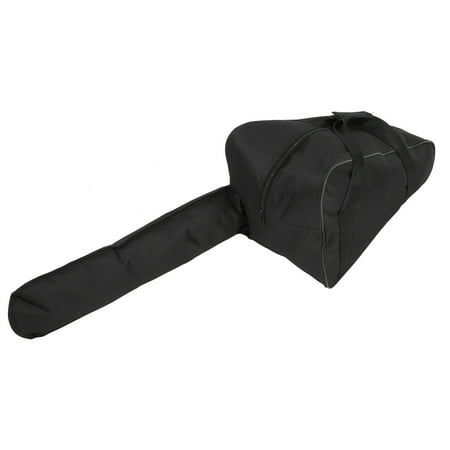Battery-Powered Chainsaws are relatively new on the scene, but gas saws have long been the tool of choice for cutting down trees, trimming branches, and tackling other heavy-duty tasks in the world of forestry and landscaping. Traditionally, chainsaws have been powered by gasoline engines, but in recent years, battery-powered chainsaws have gained popularity as a more eco-friendly and convenient alternative. Let's talk about the pros and cons of battery-powered chainsaws to help you decide whether they are the right choice for your needs.
What's Great About Battery-Powered Chainsaws?
Environmentally Friendly: One of the most significant advantages of battery-powered chainsaws is their eco-friendliness. Unlike their gas-powered counterparts, they produce zero emissions. This means they are better for the environment and ideal for use in residential areas, where air quality and noise pollution are concerns.
Quiet Operation: Speaking of noise pollution, battery-powered chainsaws are considerably quieter than their gas-powered counterparts. This makes them a great choice for use in urban or suburban settings where noise restrictions may apply. The reduced noise level also reduces the risk of disturbing neighbors or disrupting the peace and quiet of your property.
Easy to Start: Starting a gas-powered chainsaw can sometimes be a hassle, involving pulling a recoil cord multiple times. Do you prime the bulb now? Do you choke it? Did I flood it? Who knows? Battery-powered chainsaws, on the other hand, start with the push of a button, making them more user-friendly and convenient, especially for beginners.
Low Maintenance: Battery-powered chainsaws are low-maintenance tools compared to gas-powered ones. There is no need to deal with messy fuel mixing, spark plugs, or carburetor adjustments. This simplifies maintenance and reduces the overall cost of ownership.
Lightweight and Maneuverable: Battery-powered chainsaws tend to be lighter and more compact than gas models. This makes them easier to handle and maneuver, reducing user fatigue during extended use. It also allows for easier access to tight spaces and awkward angles.
No Fumes or Odors: With battery-powered chainsaws, you won't have to deal with noxious exhaust fumes or unpleasant odors. This makes them a more pleasant and safer choice for users, as well as those nearby.
Lower Operating Costs: While the initial purchase price of a battery-powered chainsaw may be higher than that of a gas-powered model, the long-term operating costs are often lower. You don't need to buy fuel, mix oil, or replace spark plugs and air filters, which can add up over time.
Cons of Battery-Powered Chainsaws
Limited Run Time: One of the most significant drawbacks of battery-powered chainsaws is their limited run time. Depending on the model and the size of the battery, you may get anywhere from 15 minutes to an hour of cutting time before needing to recharge. This limitation can be frustrating for larger projects that require extended use.
Recharging Time: When the battery runs out, you'll need to wait for it to recharge. This can take anywhere from 30 minutes to several hours, depending on the battery's capacity and the charger's speed. For professionals or those with large-scale projects, this downtime can be a significant inconvenience.
Reduced Power: Battery-powered chainsaws used to have less power compared to gas models. This made them less suitable for heavy-duty tasks like felling large trees or cutting through dense hardwood. If you required high cutting power, you oft needed to opt for a gas-powered chainsaw. Nowadays, Husqvarna is making battery saws that rival the HP of gas saws. They even have a line of high efficiency battery powered chainsaws for pros - their 500 XP series battery operated saws. Echo has also built high powered battery saws.
Limited Availability of Batteries: The batteries used in battery-powered chainsaws are typically specific to the brand and model. This can limit your options and make it challenging to find replacements or additional batteries. It's essential to consider the availability of spare batteries when purchasing a battery-powered chainsaw.
Initial Cost: While battery-powered chainsaws have lower long-term operating costs, their upfront purchase price is often higher than that of gas-powered chainsaws. This can be a barrier for some buyers, especially those on a tight budget. Of course, innovative products always come down in cost eventually.
Weight and Balance: Some users find that the weight and balance of battery-powered chainsaws are not as comfortable as their gas-powered counterparts. The battery can add weight to the front of the saw, affecting balance, especially in larger models.
 |
| Husqvarna 540i XP is a pro battery powered chainsaw |
So, battery-powered chainsaws offer several advantages, particularly for users who prioritize environmental friendliness, ease of use, and low maintenance. However, they also come with limitations, including limited run time and reduced power, which may not be suitable for all tasks. When deciding whether to invest in a battery-powered chainsaw, consider your specific needs and the nature of your projects. For occasional use, light-duty cutting, and tasks in noise-sensitive or environmentally conscious areas, a battery-powered chainsaw can be a fantastic choice. For more demanding and prolonged work, a gas-powered chainsaw may still be the better option. Ultimately, the decision should align with your unique requirements and preferences.











